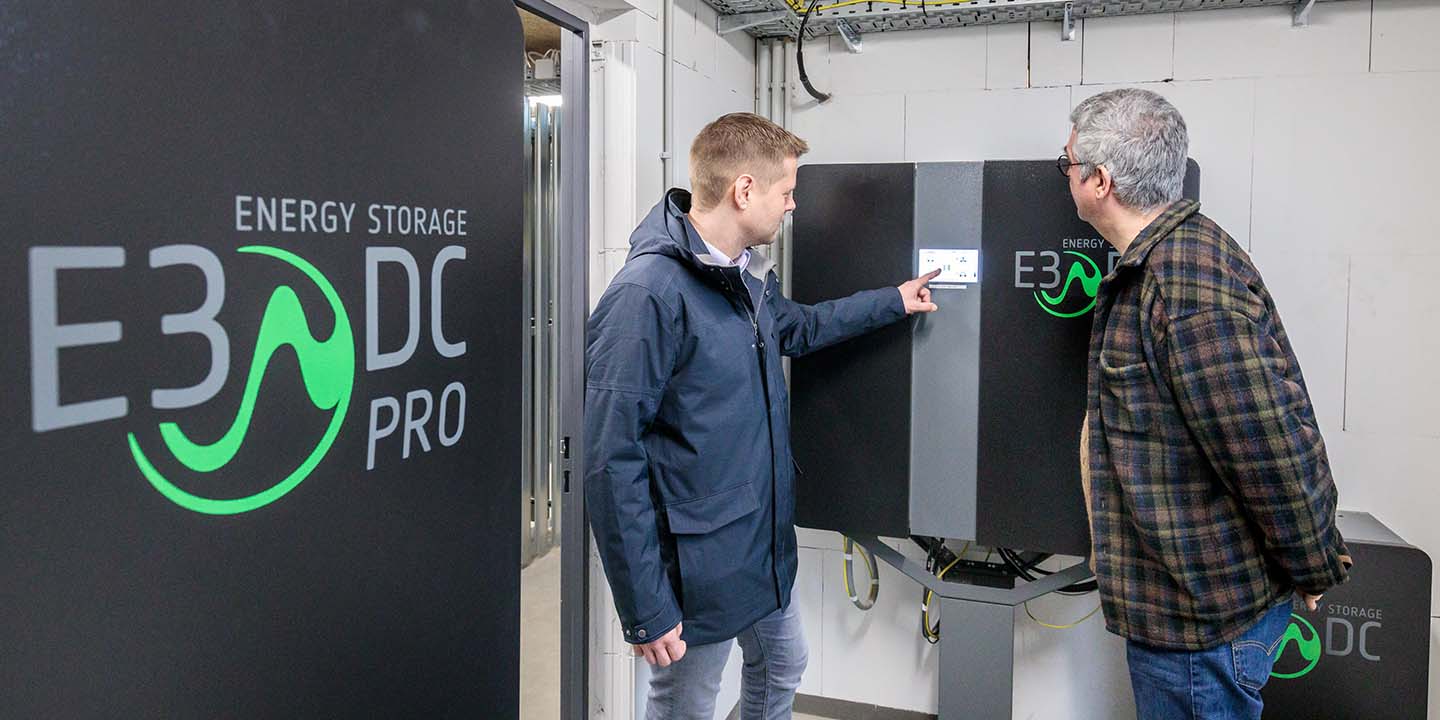The smart integration of a heat pump
The smart integration of a heat pump into a home power station lowers the external energy requirement to 20%
If you want to make effective use of clean solar energy for heat generation, you must first ensure that the necessary technical requirements are met. This means intelligently integrating the heat pump and its control system into your solar power generation system. It’s a concept that’s as sustainable as it sounds – and a solution by Hager Group subsidiary, E3/DC, has made it feasible. Thanks to a new interface, it’s now possible for clean solar power to become a standard feature of two E3/DC home power stations.
If you choose a storage system from the E3/DC E and PRO ranges, you’ll get sector coupling as a standard in the future. The idea of integrating electricity, heating and mobility has been around for some time. In general, residential buildings have become more efficient in terms of heating in recent decades. But until now, heating has remained a significant cost factor – and CO2 factor – which can only be reduced further by using renewable energy.
Why it makes sense to link a heat pump to a solar installation and storage system
If you want to move a step closer to the goal of climate-neutral living at home, our colleagues at E3/DC recommend linking your heat pump to a high-performance solar installation and a smart storage system. Their new solution can cover 80 per cent of all energy needs. It’s the only way to generate your household electricity and also generate a large proportion of your domestic heat yourself, all from renewable sources. A further advantage is that it provides a high level of self-sufficiency all year round. This means being independent from the regional energy suppliers’ electricity grid. A rapidly growing number of E3/DC customers are opting for active sector coupling, and their results show that 60 per cent or more of heat pump operation is covered by solar power. This requires a high degree of photovoltaic performance combined with the right storage capacity.
Find out more here
For further information on this topic, we recommend reading “Masterplan eMobilie”, published in July 2020. In this book, our colleague Dr Andreas Piepenbrink, together with Andreas Neumann, explains how residential buildings can make up for CO2 emissions arising from construction and use by generating their own energy.

